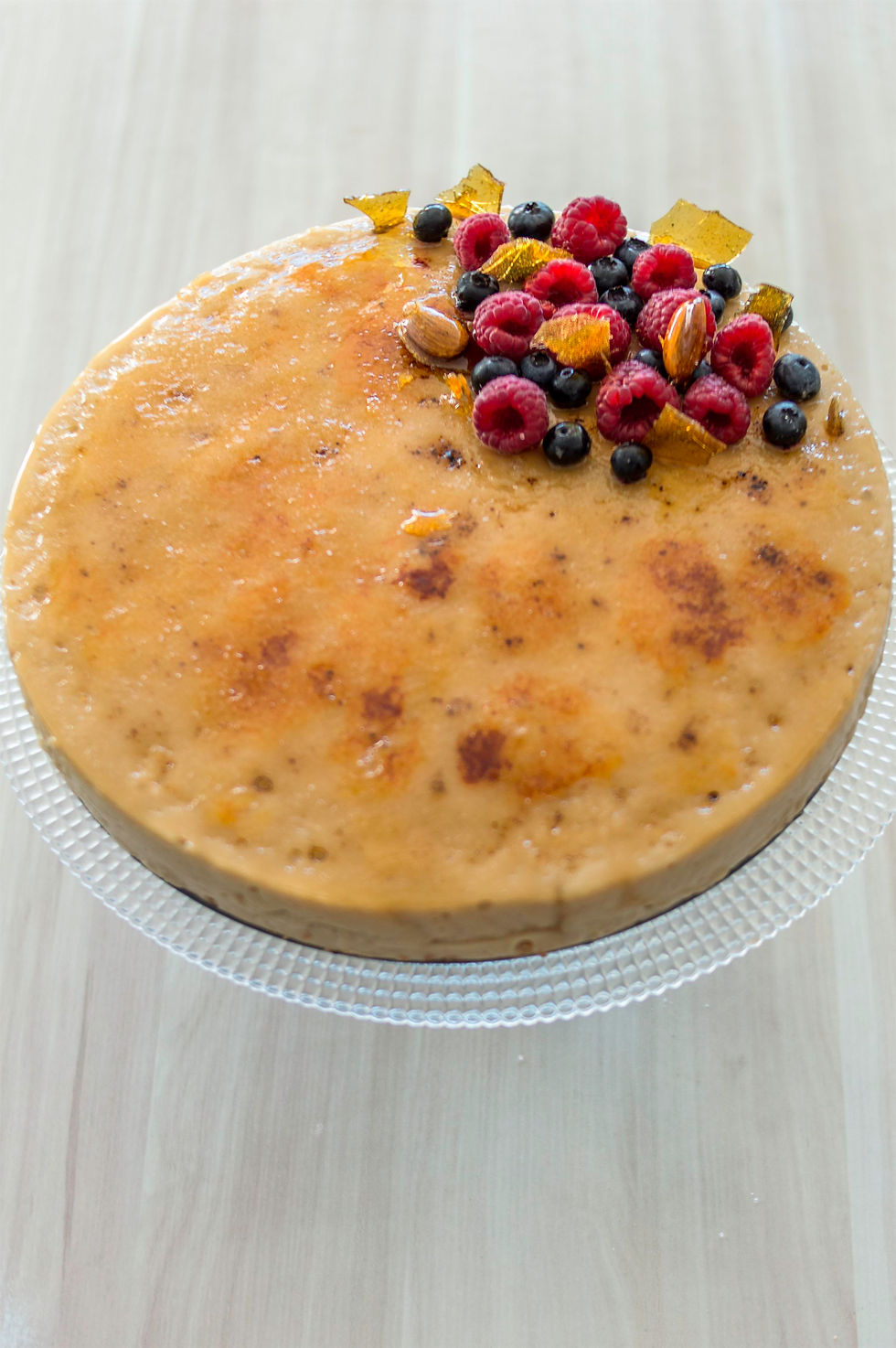We love classic desserts, and one of them is creme brulee, not that long ago I've posted a simple vegan creme brulee recipe (you can find it here), and the idea came up into my mind that the texture of it is so creamy, it possibly will make a beautiful cheesecake-like tart.
And I think it came out pretty good, that's why I decided to share it with you because it takes less than half of an hour to make which is helpful if you have some kind of an occassion and you don't have a lot of time to make something more time consumming.
So, I hope you will enjoy this recipe and today I would like to share with you some information about cheesecake (as you already know a lot about creme brule).
An ancient form of cheesecake may have been a popular dish in ancient Greece even prior to Romans' adoption of it with the conquest of Greece. The earliest attested mention of a cheesecake is by the Greek physician Aegimus (5th century BCE), who wrote a book on the art of making cheesecakes (πλακουντοποιικόν σύγγραμμα—plakountopoiikon sungramma). The earliest extant cheesecake recipes are found in Cato the Elder's De Agri Cultura, which includes recipes for three cakes for religious uses: libum, savillum and placenta. Of the three, placenta is most like most modern cheesecakes, having a crust that is separately prepared and baked.
A more modern version, called a sambocade made with elderflower and rose water, is found in Forme of Cury, an English cookbook from 1390. On this basis, chef Heston Blumenthal has argued that cheesecake is an English invention.
The English name cheesecake has been used only since the 15th century, but the cheesecake did not evolve into its modern form until somewhere around the 18th century. Europeans began removing yeast and adding beaten eggs to the cheesecake instead. With the overpowering yeast flavor gone, the result tasted more like a dessert treat.
Modern commercial American cream cheese was developed in 1872, when William Lawrence, from Chester, New York, while looking for a way to recreate the soft, French cheese Neufchâtel, accidentally came up with a way of making an "unripened cheese" that is heavier and creamier; other dairymen came up with similar creations independently.
Modern cheesecake comes in two different types. Along with the baked cheesecake, some cheesecakes are made with uncooked cream-cheese on a crumbled-cookie or graham cracker base. This type of cheesecake was invented in the United States. *source
Find the recipe below!
Prep: 15 min
Cook time: 10-15 min
Level: easy
Servings: 12 portions
Calories per serving: 478 kcal
Find the recipe & nutrition facts below :

For the crust:
2 cups vegan cookies (natural flavor)
6 tbsp melted coconut oil (or vegan butter,margarine)
For the creme brulee (24 cm pan):
4 can full-fat coconut milk (or 1200 ml. thick soy cream)
1 cup liquid sweetener (maple,agave)
1 cup tapioca starch or cornstarch (120 gr.)
2 tsp agar agar powder
2 tsp vanilla bean paste (or vanilla extract)
For the caramelized crust:
5 tbsp of white or brown sugar
Method:
Step 1: In a food processor or high-speed blender, mix together cookies along with coconut oil until well combined. Transfer the crust mix into a 24 cm cake tin and press with your hands to form the crust for the cake. Put in the fridge or in a freezer to thicken for around 10-20 minutes.
Step 2: Whisk all the ingredients for the Brulee in the pan until it's well combined.
Step 3: Put over medium-low heat and cook for around 10-15 minutes, whisking frequently, until the mixture thickness into a pudding-like texture. (DO NOT LET IT BOIL)
Step 4: Then pour the creme on top of the prepared crust, let it cool completely. (then put it in the fridge for at least 2 h. before serving)
Step 5: Before serving, sprinkle sugar evenly on top of creme brulee. Use a blow torch to caramelize the top, or put it under the broiler in your oven for around 5 minutes. Decorate with fresh fruits and caramelized almonds. Keep in the fridge up to 4-5 days.








Kommentarer